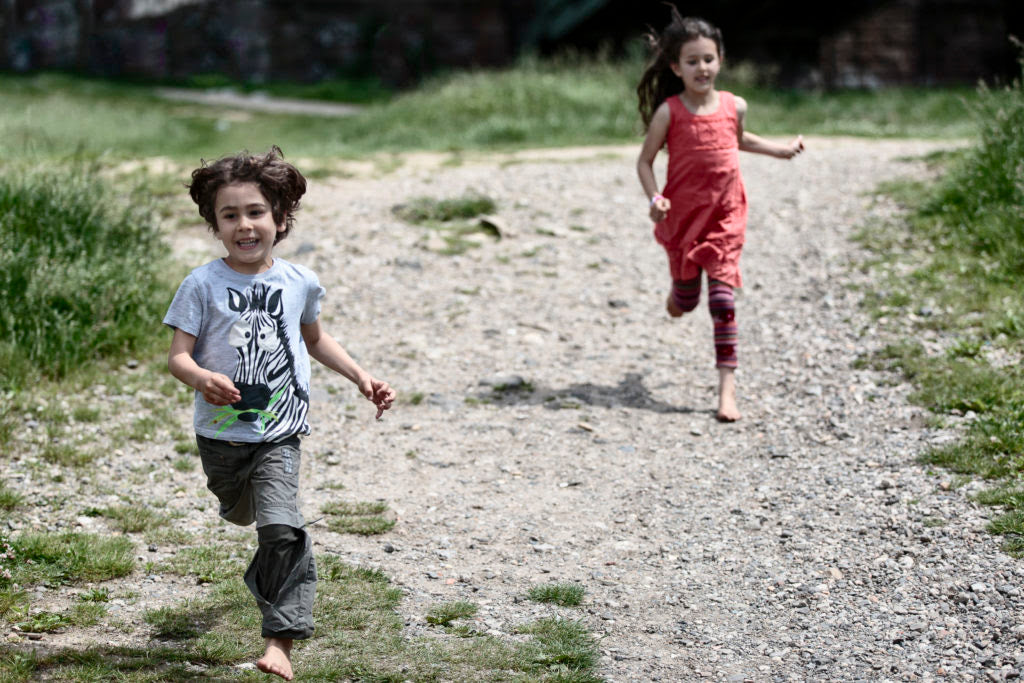Daniel de Lorenzo is founder of the IchNatur - Schule für natürliche Gesundheit in Krefeld and passionate Barefoot Coach. In this interview he talks about the right transition to barefoot running.

Daniel de Lorenzo - IchNatur Schule für Gesundheit
When it comes to finding the right shoe, opinions differ.
You could ask, generally, whether traditional shoes are a "must" or on the other hand (foot), whether being barefoot or using minimal shoes is the more natural, healthier way to go - after all, we humans were originally designed without shoes ;)
What´s the criticism of minimal footwear ?
What is being criticized is what defines a minimal shoe: thin, flexible sole, without cushioning or arch support.
Let’s think briefly about the biomechanical processes of our locomotion: How do we move properly, as nature intended, and which physical forces come into play?
We all share 3 distinct modes:
- walking
- running
- sprinting (not relevant to the current discussion)
How do these different types of movement work?
In biomechanical terms, walking is a pendulum motion in which a little bit more than our own body weight affects the foot and our musculoskeletal system. Besides a fat-pad under our heel bone, no special suspension is needed here. Humans spontaneously touch down with their heel first and therefore do not use the anatomical spring mechanisms built into our feet and lower legs. This is especially noticeable with children and unshod populations around the world. Their gait starts with the heel, with smaller and more gentle steps than the typical one.
Although some say that while walking, the forefoot should meet the ground first, it ultimately remains a matter of taste (when the tibialis anterior muscle is paralysed, or when the achilles tendon is shortened are two distinct examples that show also this pattern of walking)
When we run, everything changes - the heel strike becomes a forefoot strike. Whereas when walking we land in front of our body’s centre of mass, when running, the foot is under or behind it. An extended knee that starts the gait cycle when walking becomes more flexed when touching the ground while running. When we walk, at least one foot is always in contact with the ground. But when we run, this is omitted: we are essentially flying from one leg to the other, facilitating impact forces that are 3 to 4 times greater than our own body weight (on each foot).
These are very powerful forces and we would be strangely constructed if nature had not equipped us to handle them with appropriate anatomical structures! The plantar fascia (strong ligament under the sole of the foot), the foot’s intrinsic and extrinsic muscles, responsible for forming the arches in our foot, and with the thick Achilles tendon (the strongest one in our bodies), absorb most of the energy from the ground forces on impact, and direct it to the next step.
These and many other physical traits allow us to run long distances so efficiently, that we are actually considered to be the best long-distance-running animal on the planet.

Kids gone wild
Why do injuries occur when running in minimal footwear?
Since most joggers in running shoes hit the ground with their heel first, it becomes clear that, without the padding, this can lead to problems.
In addition, the structures of the foot, such as tendons, connective tissue, muscles and bones, are usually underdeveloped, even with very well-trained runners. This is due to a lifetime of wearing conventional (running) shoes.
Furthermore, the usual running techniques result in an even greater burden on the musculoskeletal system.
Therefore, the discomfort associated with running in minimal shoes is attributed to poor technique and lack of adaptation time to the new gear, rather than to the shoes themselves.
What is a good transition to minimal footwear?
The switch from traditional shoes to minimal alternatives should therefore be performed with care. The idea that walking barefoot corresponds to our nature and does not have to be learned is perfectly reasonable and originally absolutely right.
However, we have left our nature so far behind, replacing it too often with marketing-influenced new behaviors that frequently do more harm than good.
So when talking about getting back to the biological behaviors that define who we are, one can come across some difficulties that are embedded in our cultures.
Still, the dissonance sometimes screams out so loudly (traditional shoes vs feet), that it’s hard to ignore and move on, so a change must be made and is always possible.
In most cases, switching to walking in barefoot shoes is not a problem. It often results in a slight stiffness of the calves and the foot muscles. This usually disappears after a short time.
Should I learn barefoot running technique?
As mentioned before, the forces that are applied to our bodies while running work differently and with more impact than walking. So relearning the right, natural running technique can help us save time, have more fun and avoid unnecessary injuries.
Putting your feet in the hands of a professional trainer can ensure a safe transition into the new paradigm that will empower your running.
_____
Information about workshops, coachings and training: www.ichnatur.de
E-Mail: info@ichnatur.de



